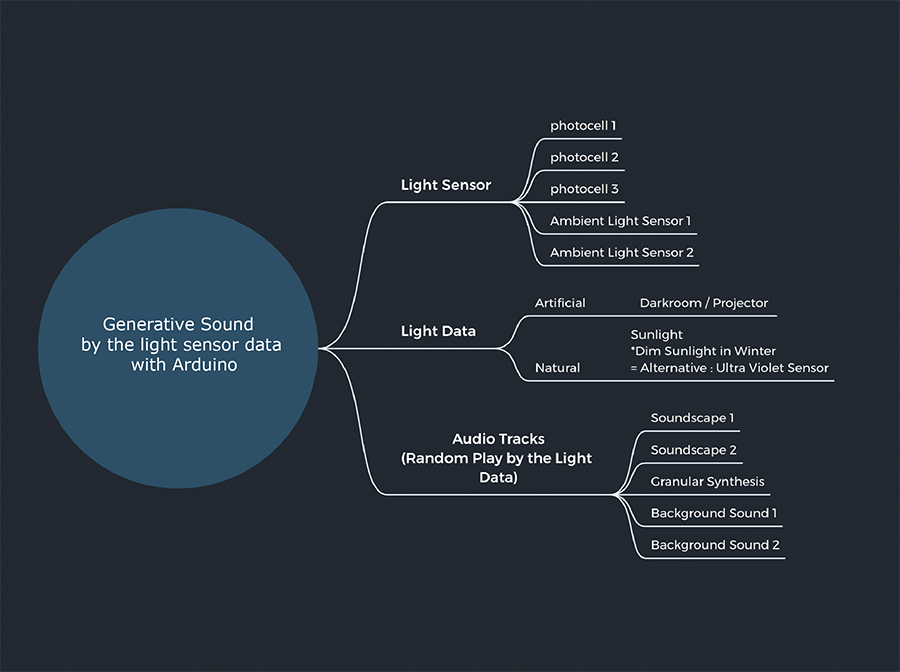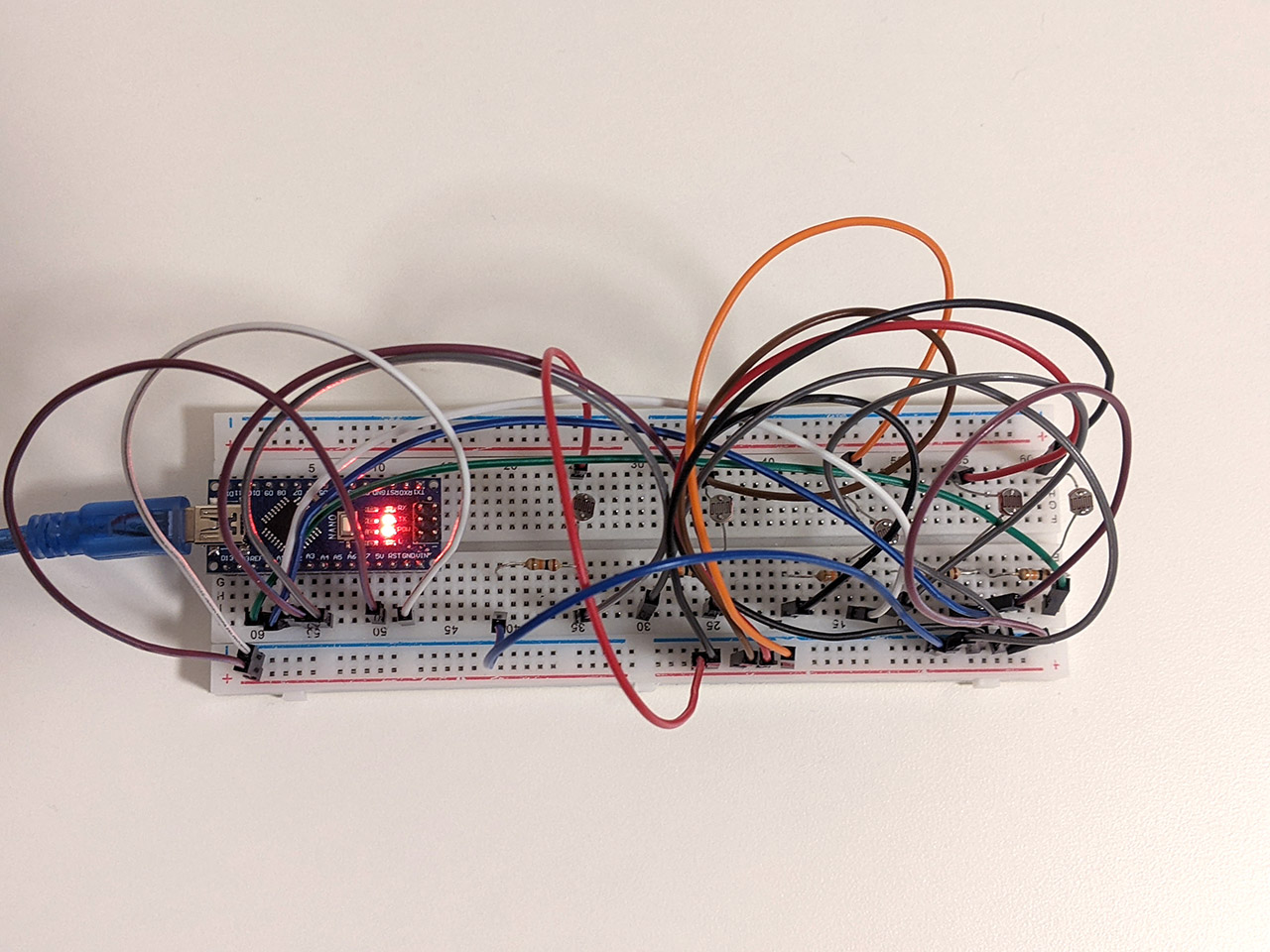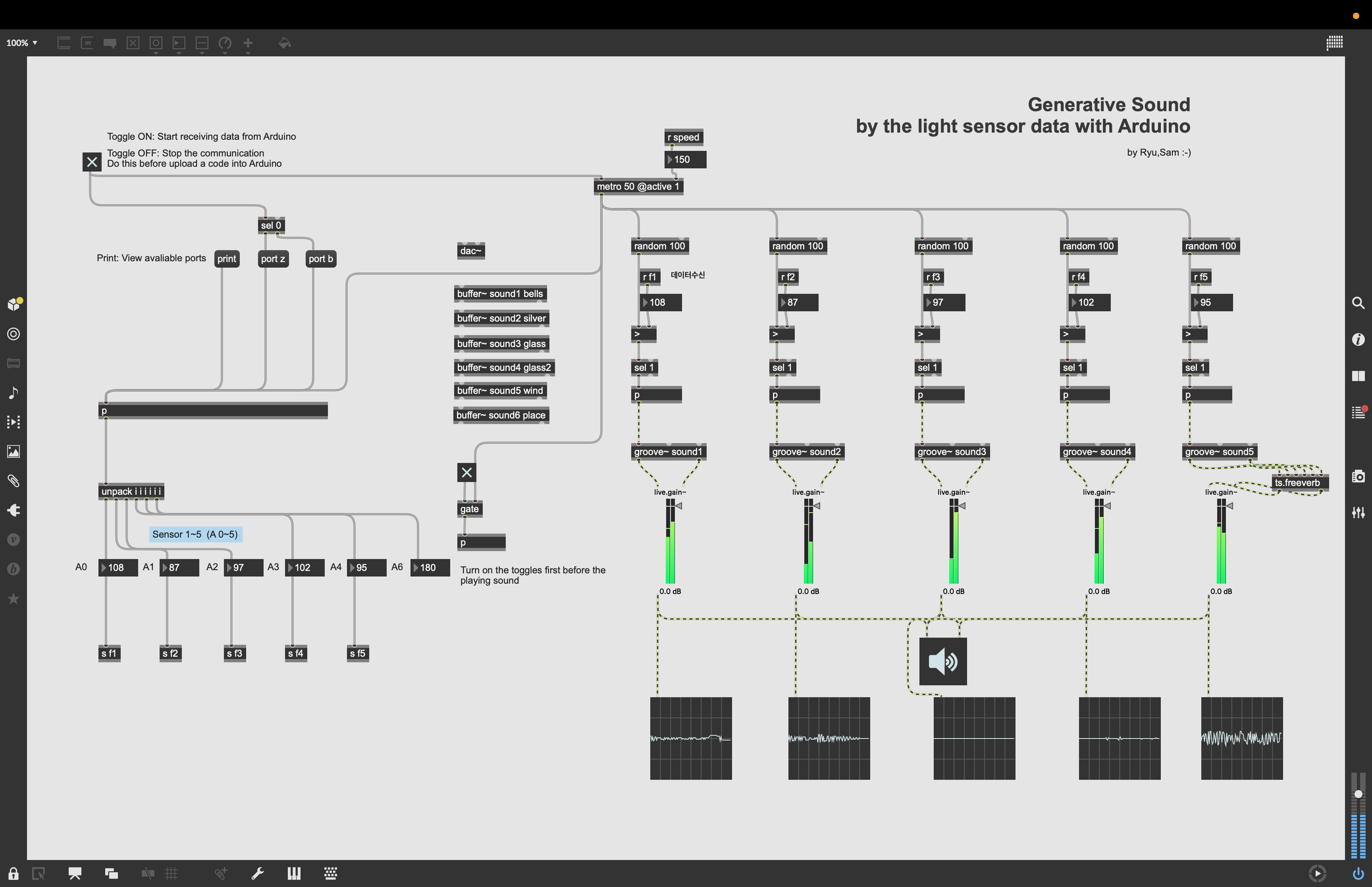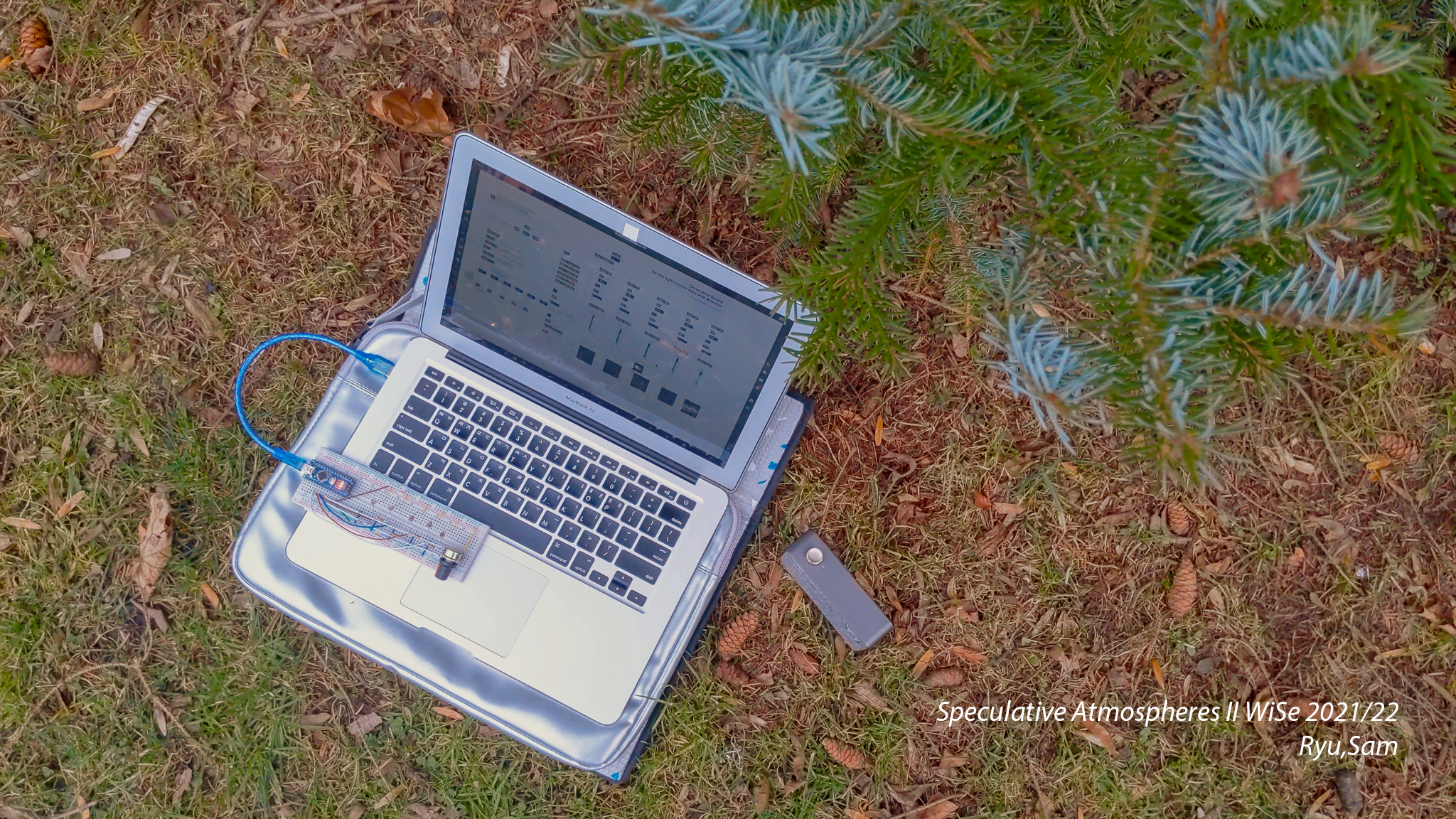No edit summary |
No edit summary |
||
| Line 24: | Line 24: | ||
This is a basic attempt to make the environment compose music. | This is a basic attempt to make the environment compose music. | ||
'''-Sound material:''' | |||
Sound collection through field recording: | Sound collection through field recording: | ||
Pieces such as glass, bell, silver ring, wind etc. | Pieces such as glass, bell, silver ring, wind etc. | ||
Revision as of 23:57, 8 February 2022
The Light and Resonance in the Air
Speculative Atmospheres ll,WiSe 2021/22
Sound and Light Sensors Experiment with Arduino+Max/Msp by Ryu,Sam
Preview Video of the experiment
The sound is generated randomly according to the movement of light. Pitch and velocity change according to light data. Let the light and environment play music.
1.IDEAS
- Mindmap
5 Light sensors are converted into values through Arduino to Max, which are converted to play in a random combination of five tracks of sound. The flow of music continues to change because the soundtrack layers are played differently each time according to the frequency of light.
Light illumination may not be dynamic outdoors in winter, so an environment where light can be used indoors as an alternative, but it would be also possible to use natural light. This is a basic attempt to make the environment compose music.
-Sound material:
Sound collection through field recording: Pieces such as glass, bell, silver ring, wind etc.
2.PROCESS
A .Arduino / Sensors
01. Prepared five photoresistors (light sensors).
02. Measuring the lowest/maximum resistance value with a multimeter.
03. The resistance value is calculated according to the following formula.
R2= √R1(max)xR1(Min)
04. Connect the five photoresistors with the appropriate register (R2) to the breadboard.
B. Arduino
01. Initialize five sensors, receive data values from Arduino, and send them to Max.
//int val[5]; array.5 light sensors total
void setup()
{
Serial.begin(9600); //Serial Communication set up
}
void loop()
{
for(int i = 0; i < 5; i++){
val[i] = analogRead(i);
Serial.print(val[i]);
Serial.print(" ");
}
Serial.println();
delay(10);
}
C. MAX/MSP
01. Receive data transmitted from Arduino through Arduino and Max connection patches.
02. Sending data to five tracks by applying speed control with random values.
03. Sound generated by the data value of light.
-Outdoor Experiment
It was not easy to apply various light movements on sensors because cloudy weather persists in winter. However, the experiment was still possible because we could expect the movement of light depending on the movement of the shade or wind.
3. Review
Overall, I would like to say that it was a very interesting and meaningful experience. For the first time this semester, I entered the sensor and Arduino and conducted a sound experiment with Max/Msp. Since I am currently majoring in Electro-Acoustic Composition in the Department of Sound, therefore, I am very interested in acoustic atmosphere and environmental factors. The light environment is actually an environmental factor that has an absolute influence on humans, and I will continue converting the story created by light into sound in the future.
The following experiments can create more complex and completed goals by installing them in more diverse locations and developing patches in Max/Msp through the extension of the sensor. This is planned for the next semester.



